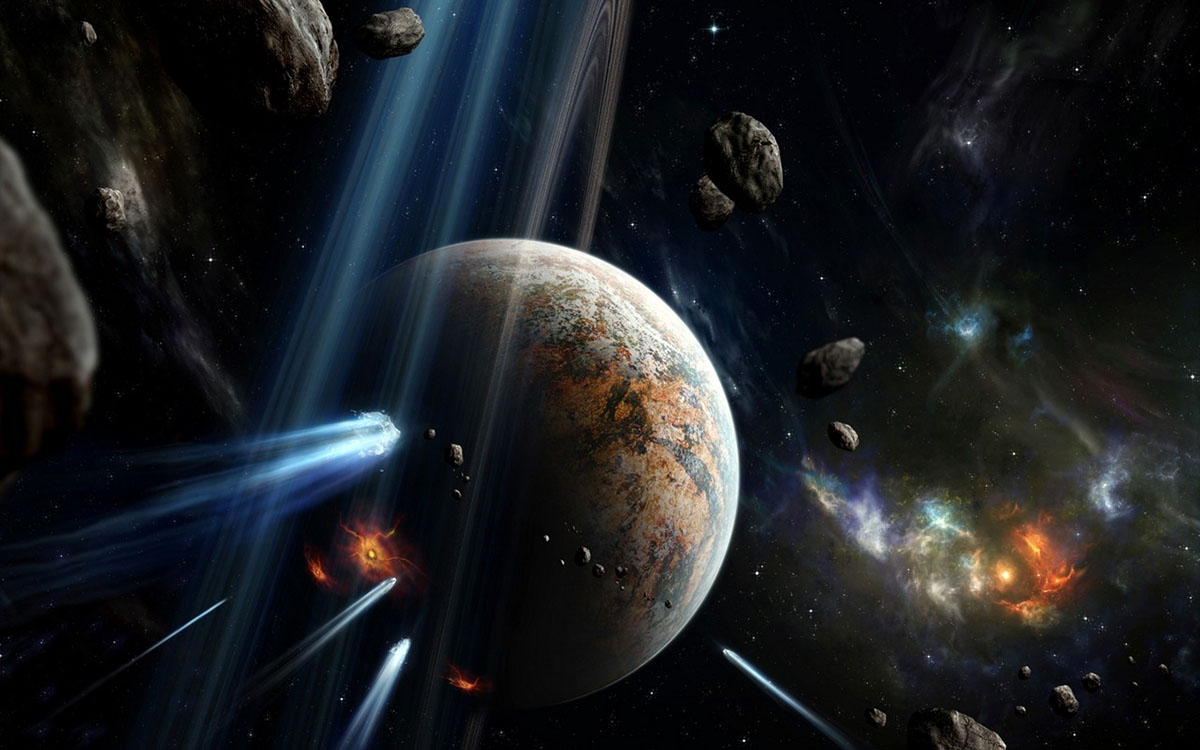it’s a comet! it’s a meteor! no, it’s a piece of rna!

What do you get when you take pyrimidine molecules, freeze them in a vacuum to -340°F, then expose them to ultraviolet radiation you’d find in space? Think about it for a second. If you took a few extra credits in a college biology class, you may remember that your DNA contains purines and their chemical relatives pyrimidines, so the end result of changing a pyrimidine should have something to do with heredity. And indeed it does. If your experiment accurately replicates what the NASA Ames Research Center has been able to do, you’ll get one of the key components of genetics; uracil. Yes, the same uracil which replaces thymine in an RNA strand and pairs up with adenine during the production of proteins. Proteins composed of amino acids. That also have a cosmic origin and acquire a bias in chirality (the direction in which a molecule is wound) in meteorites.
So not only is space full of comets and asteroids rich with water ice, amino acids and simple sugars that can bind into more complex precursors of DNA and RNA strands, but it seems that conditions in interstellar space could also alter carbon rich molecules into full blown nucleobases. Here’s how the process works…
The researchers thought that if molecules of pyrimidine could survive long enough to migrate into interstellar dust clouds, they might be able to shield themselves from radiation destruction. Once in the clouds, most molecules freeze onto dust grains. […]
They found that when pyrimidine is frozen in water ice, it is much less vulnerable to destruction by radiation. Instead of being destroyed, many of the molecules took on new forms, such as the RNA component uracil, which is found in the genetic make-up of all living organisms on Earth.
For those of us wondering how life could arise on a newly formed, barren planet that just started cooling from millions of years of collisions, experiments like this are constantly pointing skyward and showing us that life’s chemistry kit was quite literally raining down on Earth billions of years ago. Maybe biology and astronomy are eventually destined to join at the hip when it comes to studying abiogenesis and it’s just a matter of time until colleges start offering astrobiology programs for those with a passion for space and studying the biosphere.
See: Nuevo, M., Milam, S., Sandford, S., Elsila, J., & Dworkin, J. (2009). Formation of Uracil from the Ultraviolet Photo-Irradiation of Pyrimidine in Pure H2O Ices Astrobiology, 9 (7), 683–695 DOI: 10.1089/ast.2008.0324





